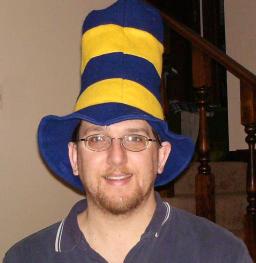no greater love: william tyndale
The Bible has been translated into more languages than any other book. More than fifty complete translations have been produced in the English language alone. But the Bible was not always so readily available.
In the early days of Christianity, the New Testament writings were collected, copied, and treasured by churches throughout the Roman Empire. Together with the Septuagint (a Greek translation of the Hebrew Bible combined with a few other writings) these became the Scriptures, the sacred writings, of the church. To be sure, there were a few disagreements about whether some of the books should be included, but within a few centuries the matter was settled. The Bible was soon translated into Latin for the benefit of those Christians in Western Europe, for whom Greek was no longer a common language. This Latin translation was known as the Vulgate, from the Latin versio vulgata, meaning "common translation".
As the centuries went by, Latin ceased to be the common tongue of the West, and new languages arose — French, Spanish, Italian, German, English, and many others. But the Bible read in the churches continued to be the Vulgate.
It wasn't that no translations were made. As early as the eight century, the Venerable Bede translated the Gospel of John into the English of the day. A group known as the Waldensians, after their leader Peter Waldo, translated part of the Bible into French. In the late 14th century, John Wycliff oversaw the first complete translation of the Bible into English. Though the Catholic Church condemned Wycliff's translation as being error-prone, it was widely circulated throughout England.
The invention of the printing press in the early 15th century permanently changed the religious landscape in the West. Critics of the Catholic Church were able to publish pamphlets questioning the church's doctrines, and distribute them quickly and widely. The printing press was also a boon for those who desired to translate the Bible into the new common languages.
In addition, translators were also aided by the work of the Catholic Priest and scholar, Desiderius Erasmus. Erasmus gathered as many Greek and Latin manuscripts as he could find, and published a new Latin translation. He included the Greek text to allow other scholars to check the accuracy of his translation. His text was first published in 1516, and was revised many times over the next few years.
Martin Luther received a copy of Erasmus' text, and began translating the Bible into German in 1521. In that same year, William Tyndale began to express his interest in translating the Bible into Modern English.
Tyndale sought permission from the Catholic hierarchy, but was rebuffed. He then left England and made his way to Germany, where he worked on a translation in secret. Tyndale's English New Testament was published in 1525. Tyndale also began writing pamphlets criticizing Catholic doctrines such as transubstantiation, and the Catholic understanding of salvation. Back in England, Cardinal Wolsey called for Tyndale's arrest.
Fleeing from an anti-Lutheran backlash in Germany, Tyndale escaped to Antwerp in what is now Belgium. He continued to publish copies of his New Testament, which were then smuggled into England and Scotland.
At about the same time, Henry VIII, King of England, separated himself from the Catholic Church in order to divorce his wife. Tyndale was just as critical of Henry as he was of Catholicism, and Henry, too, called for Tyndale's arrest.
In 1535 one Henry Phillips found Tyndale in Antwerp, claiming to be a new Christian and wanting to learn from Tyndale. In reality, Phillips was preparing to betray Tyndale to church authorities.
Tyndale was arrested and taken to a prison outside of Brussels. He was convicted of heresy and sentenced to burning at the stake. On October 6 he was led from his prison cell and tied to the stake. Zealous to the end, Tyndale cried out before he died, "Lord! Open the King of England's eyes."
As was the custom of the day, the execution officer strangled Tyndale to death, then lit his body on fire.
Labels: martyrs






